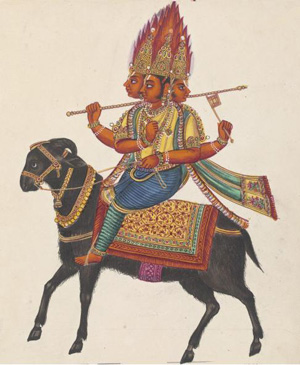1500........1400........1300........1000
1400 BCE
The Olmec
The first Mesoamerican civilization developed in the jungles of the north coast of Mexico. The Olmecs built earth mounds and temples, and carved colossal sculptures of the heads of rulers, ancestors, or gods - all wearing helmets.
1352 BCE
Sun worshipper
Pharaoh Akhenaten tried to make the Egyptians worship a single god, the Aten or Sun-disc. He founded a new capital, Akhenaten, with open-air temples for worshipping the Sun. On his death, around 1334 BCE, the old religion was restored.
1302-1213 BCE RAMESES THE GREAT
Rameses II, known as Rameses the Great, ruled Egypt for 66 years. His long reign brought stability and prosperity to the Egyptian empire, and he was a major figure in the Middle East. He even claimed to have defeated single-handedly the threat from the Hittite empire in the north, at the battle of Kadesh. In fact the battle was inconclusive.

Father of many
It is said that Rameses had seven wives and fathered more than a hundred sons. His favourite wife was his first, Nefertari, whom he married at the age of 15.
Famous face
Rameses built a huge number of monuments and temples, which often included colossal statues of himself such as the temple at Abu Simbel.
Trojan horse
A Bronze Age legend tells of the siege of Troy. The Greeks built a huge wooden horse, hid soldiers inside, and pretended to sail away. When the Trojans took the horse into the city the soldiers crept out, and opened the gates to the Greeks, who captured the city.
1250-1100 BCE
BRONZE AGE COLLAPSE
From 1250-1100 BCE, the eastern Mediterranean was in turmoil. There was a mass movement of people looking for new lands to settle, and some of the great Bronze Age civilizations, including the Mycenaeans and Hittites, were violently destroyed by unknown enemies. Only Egypt was strong enough to beat off foreign invaders, whom the Egyptians called the "Sea People".
Greek Dark Age
Some time around 1100 BCE, Mycenae and the other fortified palaces in Greece were sacked and burned.
A period now called the Greek Dark Age followed. The Knowledge of writing was lost, and population levels fell.
Egypt endures
Pharaoh Rameses III defeated a great seaborne invasion by the Sea Peoples in the Nile delta in 1178 BCE. Rameses had scenes of his victory carved on temple walls, showing a captive people called the "Peleset".
They later settled on the coast of Canaan, where they gave their name to Palestine. We know them from the Bible as the Phillistines.
1000 BCE
The Aryans

Since the middle of the second millennium, a people called the Aryans had been setting in northwest India. They brought with them an early form of Hinduism. Most of what we know of them comes from their collection of religious poems, the Vedas. Their language, Sanskrit, is closely related to many European languages.
...
Agni, one of the most important Vedic gods
...
1046 BCE
Zhou dynasty
In CHina, king Wu of Zhou defeated the last Shang emperor in battle, and founded the Zhou dynasty. Under the Zhou, iron-working was introduced to China.
Phoenicians
After the Bronze Age, the phoenicians, who lived on the coast of modern-day Lebanon and Syria, became the leading seafaring merchants of the Mediterranean. They traded in purple dye, extracted from the murex sea snail.